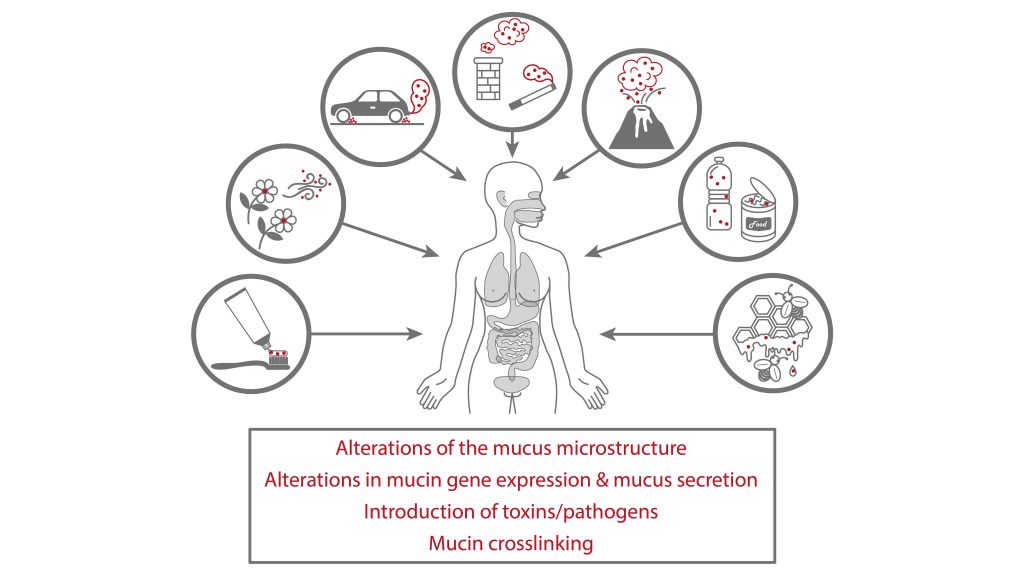From the Journal: Biophysics Reviews
WASHINGTON, August 10, 2021 — Major disruptions to our health and quality of life are front of mind in an era when wildfires, floods, and the ongoing COVID-19 pandemic impact Earth’s population daily. Amid these glaring threats, the slow but rising creep of air and water pollution that humans encounter and even ingest may be easy to overlook, but research continues to reveal new data proving these exposures do impact human health.

In Biophysics Reviews, from AIP Publishing, researchers from the Technical University of Munich review recent scientific literature about the effects of particle contaminants on the mucosal system, an internal membrane that serves as the body’s lubricant and the first line of defense from infections and toxins. These data establish a clear link between exposure to airborne or waterborne particulate matter and several health conditions.
“Mucosal barriers are really important to protect various body systems, but that mucosal function is only there if we don’t damage it,” said co-author Oliver Lieleg. “Sadly, our native mucosal systems are being compromised by micro- and nanoparticles present in our environment.”
Pollution in the air and water has four major effects on the mucosal system. Structural changes can create holes, making the mucosal barrier leaky. Pathogens and toxins can piggyback on the particles and enter the body. Cells can produce too much or too little mucus, and neither is good for preserving optimal function (e.g., when lubricating the eye to protect from abrasion upon blinking). Finally, the quality (e.g., stiffness) of the mucus itself can become altered.
“Mucus is a complex mixture of components, and keeping the composition right is important,” said Lieleg. “Imagine if you add too much flour to the recipe when making a dough. The bread would come out hard and brittle. Contaminating mucus with black carbon or microplastic has similar negative effects and can alter mucus structure and function.”
Natural processes, such as volcanic eruptions, and human activities can both result in problematic particles and produce air contaminants, like soot, and water contaminants, like the microplastics that are ubiquitous in waterways worldwide. Simply breathing, eating, and drinking exposes the body to these contaminants. Some food sources, like honey, may even be surprising in their potential to be tainted, and the effects from these foods could be underestimated.
Recent research on humans and animals demonstrates exposure to particulate matter is often correlated with the development or progression of respiratory and heart diseases as well as various types of cancer, and impaired embryonic development. The mechanisms by which these occur are still largely uncertain, but the effects of particle exposure on mucosal structure and function are likely contributors to various negative health outcomes.
“This is a topic we have to deal with and soon. That is clear as of today,” said Lieleg. “Still, we need more research to better understand which particles pose a threat and why. Those further insights are needed, so we can figure out how best to mitigate these effects.”
###
For more information:
Larry Frum
media@aip.org
301-209-3090
Article Title
Forgotten but not gone: Particulate matter as contaminations of mucosal systems
Authors
Oliver Lieleg and Matthias Marczynski
Author Affiliations
Technical University of Munich
